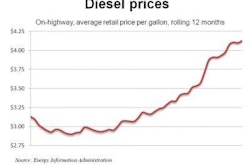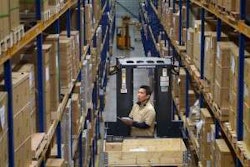Isuzu Commercial Truck of America on Tuesday, May 3, announced that full production of gasoline-powered Isuzu N-Series trucks has begun at the Spartan Motors facility in Charlotte, Mich. Spartan began initial assembly on April 18 and resumed production Tuesday.
The gasoline-powered trucks will be available in Isuzu dealerships nationwide beginning this month. This marks the first time in two years that gasoline-powered N-Series trucks have been offered by Isuzu. Previously, N-Series gasoline trucks had been assembled by General Motors at its plant in Janesville, Wis. That facility ceased operations in 2009.
The new 2012 N-Gas models – which complement the diesel-powered Isuzu N-Series trucks already available – are powered by the Vortec 6.0L small-block V8 engine that produces 297 hp at 4,300 rpm and generates 372 lb.-ft. of torque at 4,000 rpm. The powerplant is mated to a new six-speed automatic transmission with double overdrive and lock-up torque converter to facilitate added fuel economy and performance. Previous N-Series gasoline models offered only a four-speed automatic.
A full range of gasoline-powered models is available, including the 12,000-lb. GVWR NPR, with single cab wheelbases of 109, 132.5, 150 and 176 inches, and crew cab wheelbases of 150 and 176 inches; and the 14,500-lb. GVWR NPR-HD, with single cab wheelbases of 109, 132.5, 150 and 176 inches, and crew cab wheelbases of 150 and 176 inches.
“With the introduction of these new models, our dealers once again offer the broadest range of low-cab-forward solutions in the industry,” says Shaun Skinner, executive vice president and general manager of Isuzu Commercial Truck of America. “We are especially pleased that Spartan – one of the industry’s most respected manufacturers of high-quality specialty chassis and vehicles – is assembling our N-Series gas trucks. Their expertise and quality workmanship will be an enormous benefit to us, to our dealers and to the end users of our vehicles.”










